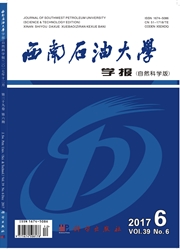

 中文摘要:
中文摘要:
为研究粗糙表面在滑动摩擦过程中的热动力学问题,基于G–W(Greenwood–Williamson)模型,建立了一个含球形微凸体粗糙表面与理想平面的滑动接触模型。使用有限元法对该模型的滑动摩擦过程进行了热机耦合计算,并研究了相对滑动速度、初始压入量和摩擦因数对粗糙体温升、等效应力和接触应力的影响。结果表明,粗糙体表面温度变化历程可分为急剧增长和缓慢增长两个阶段;微凸体上出现局部高温区,且其高应力区偏向滑移方向一侧;相对运动速度越高,温度历程第一个阶段对应的位移量就越大;不同初始压入量下,温度历程第一阶段的持续时间基本为0.05 ms;粗糙体的最大等效应力和接触应力均随着压入量和摩擦因数的增大而增大。
 英文摘要:
英文摘要:
In order to study the thermal dynamic problems of rough surface in the sliding friction process, we established a sliding contact model based on G - W(Greenwood-Williamson) model. In the model, the two sliding surfaces were simplified to an ideal smooth plane and another with spherical asperities. The coupled thermo-mechanical analysis for the sliding friction process and temperature and stress distribution of the rough body were discussed in the paper. The temperature rise, the equivalent stress and contact stress were analyzed under different relative sliding velocities, initial pressure intakes and friction coefficients. The results show that the changing process of the highest temperature of the rough body with the movement time can be divided into sharp and slow growth stage. The higher the relative sliding velocity, the greater the displacement under the highest temperature in the first stage is. The durations of the first temperature changing stage are nearly 0.05 ms under different initial pressure intakes. The maximum equivalent stress and contact stress of rough body increase with the increase of the initial pressure intake and friction coefficient.
 同期刊论文项目
同期刊论文项目
 同项目期刊论文
同项目期刊论文
 期刊信息
期刊信息
